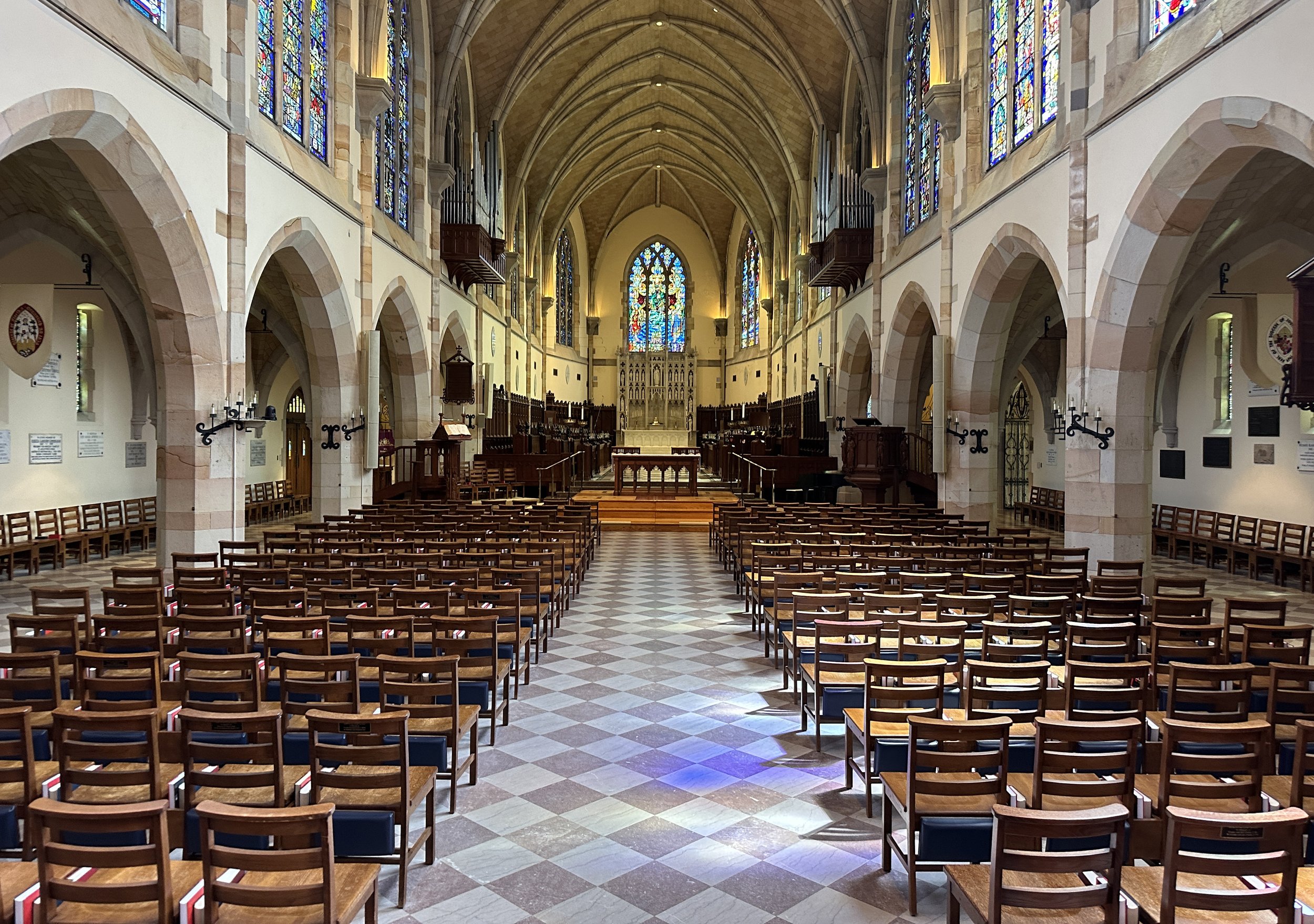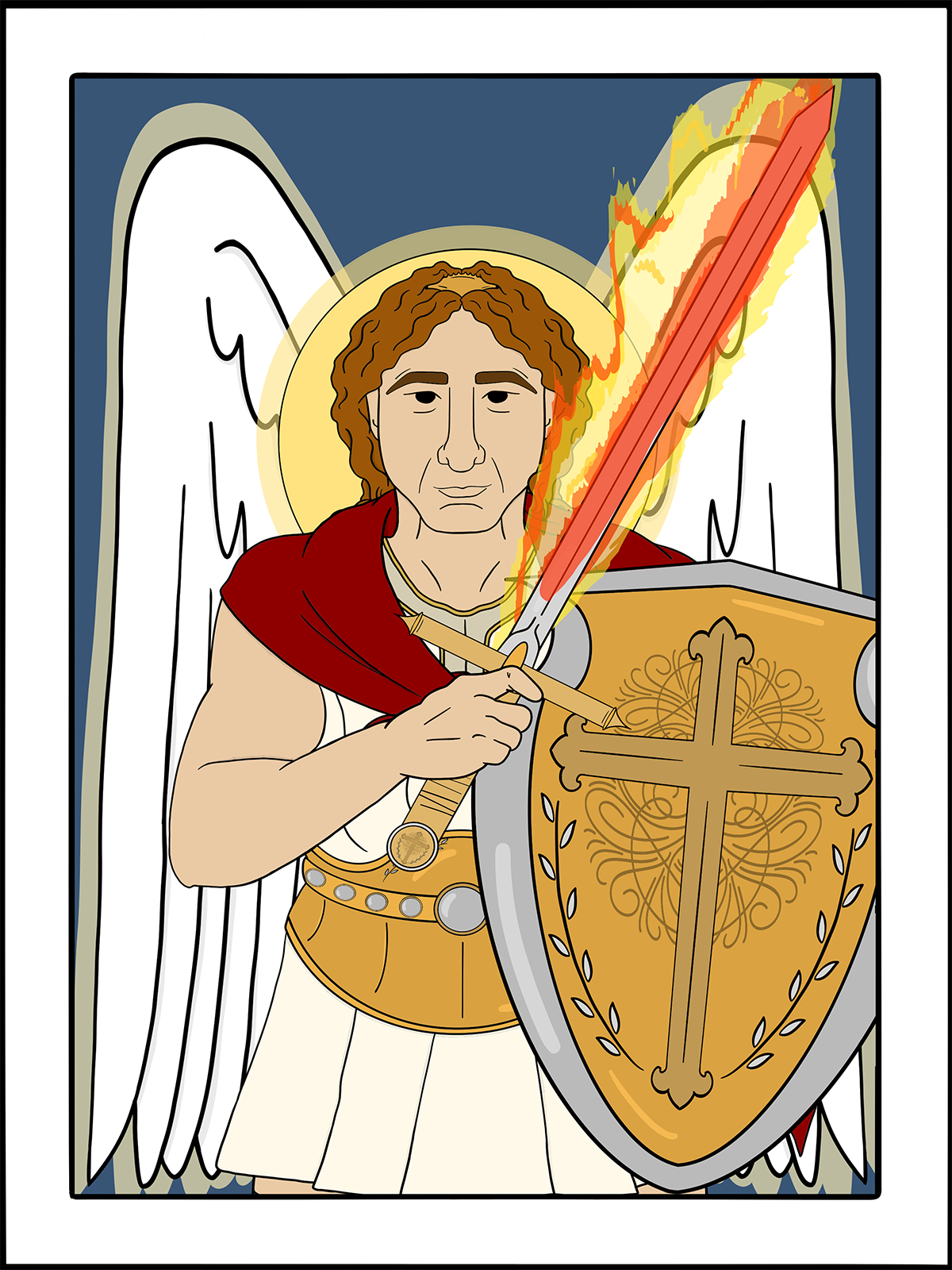
September 29
Saint Michael and all Angels
art by Rev. Kirsten Kohr of Geneva, Ohio Everlasting God, who has ordained and constituted in a wonderful order the ministries of angels and mortals: Mercifully grant that, as your holy angels always serve and worship you in heaven, so by your appointment they may help and defend us here on earth; through Jesus Christ our Lord, who lives and reigns with you and the Holy Spirit, one God, for ever and ever. Amen.
The biblical word “angel” (Greek: angelos) means, literally, a messenger. Messengers from God can be visible or invisible, and may assume human or non-human forms. Christians have always felt themselves to be attended by helpful spirits—swift, powerful, and enlightening. Those beneficent spirits are often depicted in Christian art in human form, with wings to signify their swiftness and spacelessness, with swords to signify their power, and with dazzling raiment to signify their ability to enlighten. Unfortunately, this type of pictorial representation has led many to dismiss the angels as “just another mythical beast, like the unicorn, the griffin, or the sphinx.”
Of the many angels spoken of in the Bible, only four are called by name: Michael, Gabriel, Uriel, and Raphael. The Archangel Michael is the powerful agent of God who wards off evil from God’s people, and delivers peace to them at the end of this life’s mortal struggle. “Michaelmas,” as his feast is called in England, has long been one of the popular celebrations of the Christian Year in many parts of the world.
Michael is the patron saint of countless churches, including Mont Saint-Michel, the monastery fortress off the coast of Normandy that figured so prominently in medieval English history, and Coventry Cathedral, England’s most famous modern church building, rising from the ashes of the Second World War.
Excerpted directly from “Lesser Feasts and Fasts 2022,” p. 440-441.

